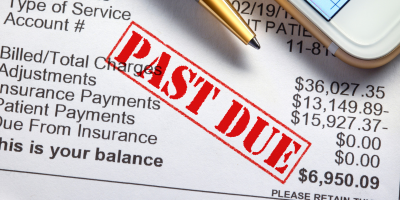If you had told me 12 years ago that I’d be tracking each and every penny that came in and out of our home, I’d have thought you crazy.
Seriously crazy.
At the time I was running our budget off of whatever scrap piece of paper was at my disposal when I noticed our paycheck deposit into the account. We brought in very little income but had no idea how to use even that little amount in a responsible way. Instead, we’d overdraw on our accounts monthly, and place a significant amount of unnecessary expenses on our credit cards.
If you’d asked me then, I wouldn’t have been able to tell you where all the money went.
Fast forward to the present day and I can’t imagine how we survived that time period. In fact, we are still dealing with some of the stupid (and I mean stupid) mistakes that we made at the time. Thankfully, though, we’ve found a system that works for us…and a method to save (and pay down debt) in a way that we never thought possible.
How To Create Your First (Successful) Zero Based Budget
If you are struggling to make your family finances work from month to month, this just might be the system you need.
What Is Zero Based Budgeting?
Put simply, the system of Zero Based Budgeting involves knowing exactly where each and every dollar in your budget is going each month. The idea is that you note how many dollars you have and then assign each dollar a purpose within your budget.
So, if you make $3,000 this month, you’ll determine the purpose of each and every one of those 3,000 dollars.
This is about the time when I see eyes glazing over and hear groans from people who believe the process will involve a considerable increase in their budgeting workload. Let me get a few things straight before we start.
#1 You Don’t Need Every Receipt to Be Successful
Just because you track every dollar in your budget DOES NOT mean that you have to keep and track every single receipt. Rather, you track every dollar you use and can do that in several simple ways.
#2 You Don’t Have to Eliminate Spending
It also doesn’t mean you have to eliminate spending entirely for the that bring you joy, including having that coffee, the bottle of wine, or heading out on the vacation you’ve always dreamed of. Instead, it gives you the freedom to do all of those things (and much more) in a way that keeps you from ruining your chances of making your house payment this month.
Why Zero-Based Budgeting?
Quite honestly, having a zero-based budget means no dollar goes to waste. This might not seem like a huge deal if you are paying your bills monthly (and on time), have a good amount put away in savings, and can always afford to pay for whatever new item you want with cash.
Is that you? If so, you might not need zero-based budgeting, just on account that you seem to have it all together (Perhaps some house cleaning tips might be more in your wheelhouse?).
On the other hand, if you are struggling to get out from under your student loans, to pay off revolving credit card or medical debt, or desperately need to put money in savings, then being able to account for each and every dollar prevents any dollar from going unused or being used for something needlessly.
Think about it: when you only have five dollars left in your pocket and a week left in the month, you take great care to only use that five dollars when it’s absolutely necessary, right? In fact, you might pass up even good things, just to make sure you make it to the end of the month without completely running out of money.
Your Zero-Based Budget works the same way, just on a larger scale. By allocating all of the money, you recognize that, in any given category, you only have a certain amount to spend. When you know that amount needs to be spent in such a way that you make it to the end of the month without running out, you’ll become more careful with what you use that money for. You’ll find (hopefully) that you’ll have additional money at the end of the month that can be used toward whatever financial goal you’ve set for your family.
Set Up Your Own Zero-Based Budget
The act of setting up a Zero-Based Budget isn’t a complicated process, but it does require you to look at the details of your income, expenses, and goals as you move forward. Don’t worry, we can walk through the process together.
Tip: Prefer to do it with a step-by-step guide? Grab the best-selling Quick Start Budget Workbook today. I’ll walk you through all of the things you need to do in order to be successful long-term!
Step 1: Your Income
Start by determining exactly how much income you will receive over the course of the month. If you know that the amount might vary, slightly, go ahead and work with the lowest amount you think you might get to begin with.
For example, if some months you receive $3000, but in other months you receive $2800, go ahead and begin budgeting with the $2800
Keep in mind that you should be tracking each and every dollar that comes into your accounts, so be careful to look for any additional income streams you bring in.
Step 2: Your Expenses
Compile all of your monthly expenses. At the start, make sure to include everything, including spending money allowances, eating out, and housing-related expenses.
Will it take some adjustment? You bet. But every good thing does, right?
Step 3: Your Debt
Of course, you have to allocate some of that income to debt payoff if you have it. In this case, I start by making sure I’ve accounted for my minimum payments, and then, based on the goals I’ve set for myself, add in additional money toward that debt paydown goal if necessary.
Step 4: Your Savings
You can definitely wait until you’ve made all of your monthly payments and have money left over to consider your savings account or additional funds, but I like to pay my savings first and foremost just as I would a bill.
Determine the amount that you will pay yourself (or your funds) each and every month.
Step 5: Remaining Money
Now that you have all of your bills accounted for, it’s time to determine how much money is left over. To do this, I simply take the income we have and subtract everything else from it.
For example:
$3,000 Income
$2,100 Expenses, Savings, Minimum Debt Payments
$900 Remaining
Ideally, you want that remaining about to be $0, so there are a couple of things you can do if you have a little money left over.
Work Toward a Goal
Have a financial goal you are working toward? In our case, I’m throwing all of our additional money toward our debt payoff goal, but for you it might be a vacation you plan to take, your emergency savings, or another fund that’s recently been depleted. Whatever your goal, that extra money can help you get there quickly if you don’t give it the opportunity to be used for something else.
Place it In Savings
If you find that you aren’t working toward a specific goal (why not?), a good rule of thumb is to allocate that money toward either emergency savings or to place it into individual savings funds toward things that you might want in the future. In our case, when we don’t have a goal needing our immediate attention, I split the money between our vacation fund and work to beef up either or emergency fund or place a little more money into the retirement account.
Whatever you choose, allocate that money accordingly, and then don’t touch it until it’s meant to be used.
How to Track Your Zero-Based Budget
Tracking your budget can be either the hardest or the easiest part of the process, depending on the method that you choose.
Use a Planner
Personally, I use the Blessed Budget Planner in combination with my cash envelope system to keep all of my expenses in order. The planner walks me through all of the categories of my budget, while also allowing me to track those incidental expenses that come out of my sinking funds each month. No matter what, I know exactly how much money I’m spending and how much I have available should something go wrong.
(Of course, if you aren’t quite ready for the full planner, you can’t go wrong with the mini-version: Quick Start Budgeting Workbook.)
Our cash envelope system has been a huge success. I’ve found that by pulling cash for everything that isn’t just a consistent, one-time expense, I don’t have to track each and every expense individually but can simply check out the envelope for that category and know exactly where I stand going forward.
Use an App
There are also many apps that help you do this very thing, including Mint, EveryDollar, and YNAB, so if that’s your preferred method, I highly recommend checking them out and finding one that fits your needs.
The idea with using an app, though, is that you need to track each and every expense either by purchasing the premium upgrade so that you can connect your bank account, or by taking the time to go back through your bank statements on a daily or weekly basis to make sure you have logged every purchase. You certainly don’t want to come out to the end of the month and find that you had a bunch of incidental expenses that didn’t really fit into any category.
All About the Application
Have you been struggling to keep your family financial situation working from month to month? If so, I highly recommend setting up a Zero-Based Budget before you go any further. Trust me, it really helps to know exactly where you are spending your money so that you can make adjustments as needed and meet your long-term goals more quickly.
Do you use a Zero-Based Budget? If so, I’d love to hear how it’s working for you in the comments below.
Tip: Have you grabbed your Quick Start Budgeting Workbook yet? If not, get it HERE.





